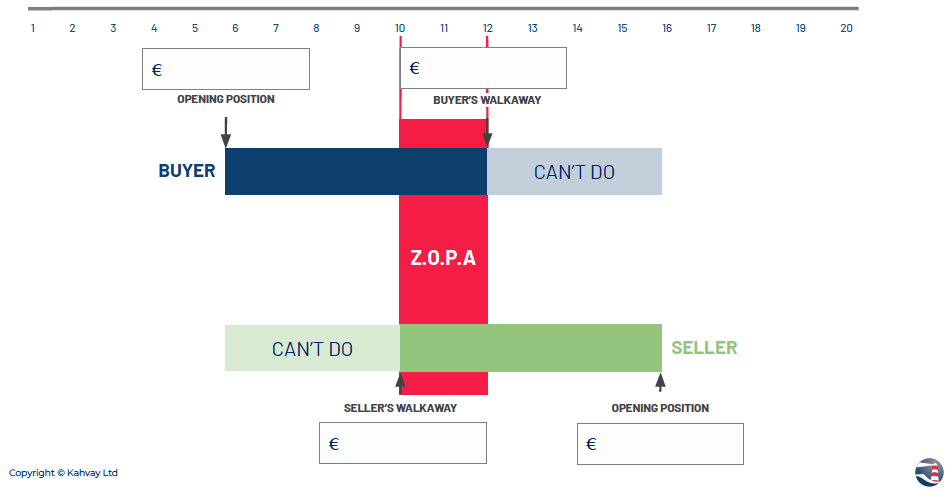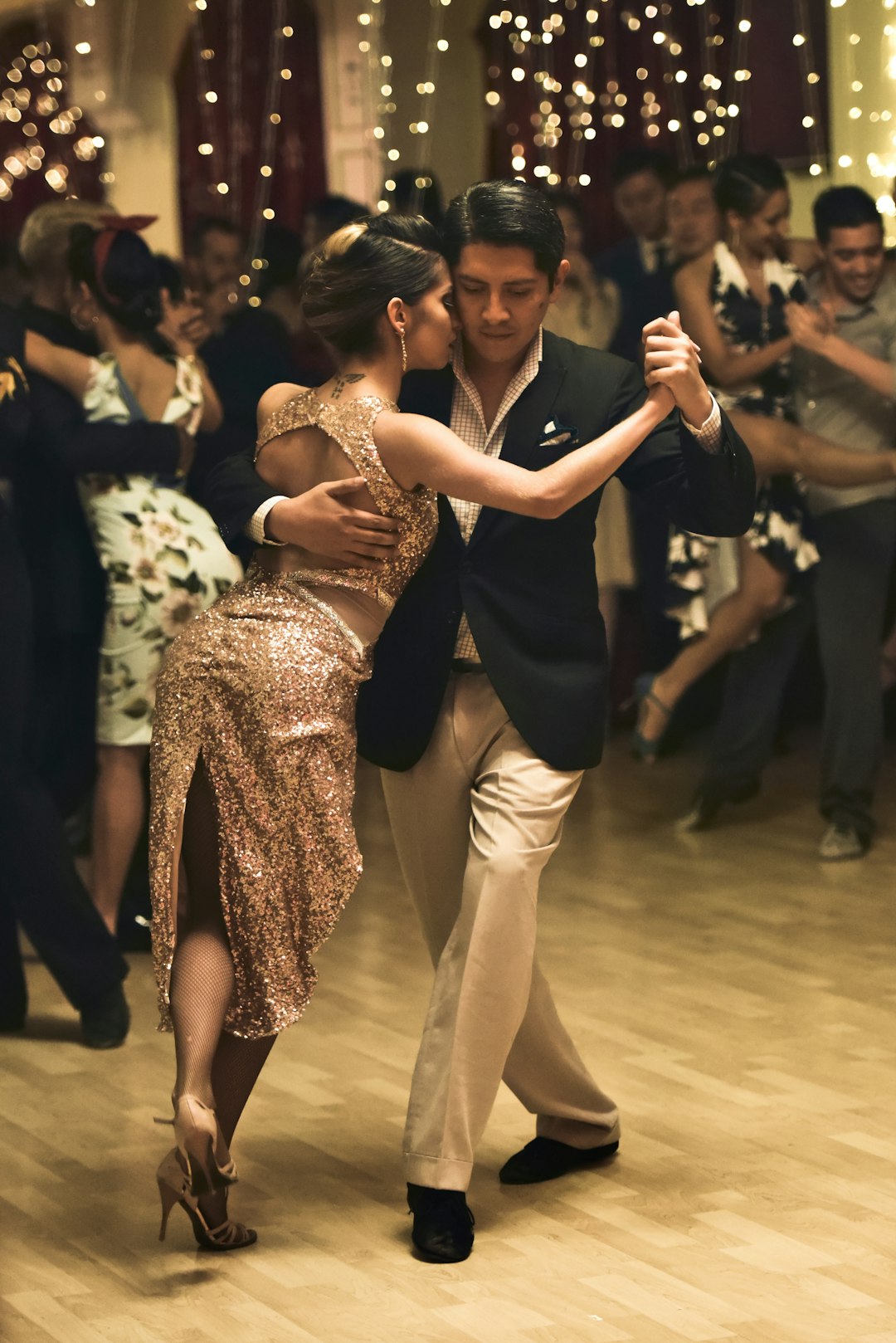Negotiation. Dance With Them. Give Them Satisfaction.
The Art of Moving In Ever Decreasing Sizes To Increase Their Level of Satisfaction
The Weekly Walkaway highlights negotiation in its ‘good’, ‘bad’ and sometimes ‘downright ugly’ forms. Issue No. 54 (24th November 2023)
What to expect?
Quote of the Week - “negotiation is not about what you say — it's about how you move.”
Thought of the Week - Negotiation. Dance With Them. Give Them Satisfaction.
Remember: You are a negotiator!
You are always managing some form of conflict, a difference of opinion or interest.
📢 Get Comfortable with Being Uncomfortable.
Negotiation isn’t about avoiding discomfort—it’s about embracing it. Learn how to stay composed under pressure, push back with confidence, and secure better deals in any situation.
✅ Master the mindset of a strong negotiator
✅ Turn discomfort into a strategic advantage
✅ Use proven frameworks to stay in control
🔥 Stop hesitating. Start negotiating with confidence today.
THOUGHT OF THE WEEK
Negotiation. Dance With Them. Give Them Satisfaction.
The Art of Moving In Ever Decreasing Sizes To Increase Their Level of Satisfaction
Negotiation is a tactical dance, a tango, of nonverbal and verbal communication, moves and countermoves.
One of the key principles of ‘The Dance’ is opening extreme and making concessions to give satisfaction and to employ the law of reciprocity.
However, what is crucial in ‘The Dance’ and often misunderstood are the dance steps, the art of moving in 'ever decreasing sizes' to make them feel like they've got a good deal.
This approach not only communicates a sense of scarcity but also signals to your counterpart that you are nearing your limit, your Walkaway. This enhances their feeling of satisfaction.
So, Walkawayers, let us dive into the importance of planning and executing your moves in ‘ever-decreasing sizes’ to improve your negotiation outcomes.
What would Sigmund Freud say? Probably a lot, but it was mostly bonkers. But seriously, let's take a look at The Psychology of ‘The Dance.’
As you all will now have become very aware, your negotiations are not merely a transactional process; they are a psychological game that requires a deep understanding of human behaviour.
When you fail to plan your moves or make erratic, emotionally charged concessions, like a cowboy, you risk sending the wrong signals.
The Pitfall of Equal Moves:
One common mistake is the tendency to make moves in equal sizes. This approach lacks finesse and fails to convey a sense of careful consideration. The symmetry of moves also creates an impression that there is more room for concession, leading to further demands.
The Cowboy Approach:
Unplanned, instinctive, and emotional moves – often referred to as ‘the cowboy’ – can be detrimental to your negotiation process. These moves lack the tactical nuance required for successful concessions. Emotional decisions send signals of desperation or uncertainty, making the negotiator appear easily moved and open to exploitation.
Moving in equal or cowboy sizes creates an impression of abundance:
Abundance, not scarcity, which suggests to your counterpart that you have more room to negotiate, that you are movable! So they might become hard and difficult, stubborn and unmovable.
They are likely to become overly competitive and greedy… just from your simple misunderstanding of ‘The Dance’!
Now, If You Were to Move in Ever Decreasing Sizes:
You would give the perception of restriction, of scarcity.
Use this appropriately, and you will communicate that you are approaching your walkaway. This gives your counterpart the feeling that they are doing well.
Your ‘Walkaway’, some call your breakpoint or limit, but simply put it is the most or least you are able to pay depending on whether you are the buyer or seller.
This simple understanding and subtle shift in perception is a powerful tactic in steering your negotiation towards better outcomes.
Want to be Assertive? Want to be seen as Confident in your negotiations? BUT want to give your counterpart satisfaction and the feeling that they got a good deal? Start planning!
Before entering the negotiation, it is so important to conduct thorough research and focus on detailed planning.
You need to plan your moves in advance and predict ‘The Dance’, the ebb and flow of the negotiation.
You need to plan what your walkaway is and predict and make an assumption, with all the research and data you have, what their walkaway is. Between those two limits is the Zone of Potential Agreement (Z.O.P.A).
Without this, you are flying blind. Shooting from the hip.
Once you have an idea of the ZOPA, you can plan to open extreme of where you think their walkaway is. Opening extreme, as you are all aware, enables you to:
Anchor your position and change the perception of value in your counterpart’s mind;
Move, concede on plan; to give them satisfaction, the feeling of getting a good deal, and by moving, you get to employ the law of reciprocity; I've moved, so you need to move;
Test your assumptions of their walkaway;
Opening a negotiation with strength sets the stage; it helps frame your negotiation. By opening extreme establishes your position and influences the tone of the entire interaction.
Starting with an assertive opener communicates confidence, conviction, and a clear understanding of your worth.
However, the key lies not just in the strength of your opening move but in your subsequent moves.
REMEMBER: Negotiation is not a competition. If you want to win in a negotiation, someone will exploit you for it. So, there is no room for ego, vanity or pride in negotiation. Move to give satisfaction. If you don't move, you will come across as overly arrogant and create a reciprocal response. They won't move.
If you want to win, you will not move to give your counterpart satisfaction. You will behave in a way which makes them feel you are winning, so that will make them feel they must be losing.
This triggers dissatisfaction, and this is not appropriate in Human Capital interactions and harms relationships. It will turn counterparts against you and make future interactions more difficult and conflict-orientated.

Plan to concede, to move, in ever-decreasing sizes. This will help to give your counterpart satisfaction. They will feel they got a good deal.
WARNING: If you are one of those negotiators who believes that if they open with exactly what they need because that is the fair and right thing to do… consider this.. If you open with exactly what you need you wont be able to move.. Therefore your counterpart considers you the opposite to how you wanted to be perceived, they see you as uncooperative, arrogant and unfair! SHOCK! If you then have to move to give them satisfaction, to save the relationship, to manage the conflict ‘you’ created… you will be moving away from your need, your objective, to do so! Eeeek!
Bring it all together, the psychology and the planning, and you get Moving in Ever-Decreasing Sizes.
Plan your moves in ever-decreasing sizes towards their walkaway, your assumption of their walkaway.
The Dance…
Target their walkaway. Not Yours!
When you approach your assumption of their walkaway, observe and deduce from their behaviours whether your assumption was correct or not.
The concept of moving in ever-decreasing sizes is a subtle yet powerful tactic that demands finesse and control.
Negotiation is emotional, like a good tango, and maintaining your control is important as you move.
Giving the impression that your move is difficult to do and using appropriate verbal and non-verbal signals alongside moving in ever-decreasing sizes enhances the tactic and delivers satisfaction to your counterpart.
This requires discipline, stick to your plan, and emotional intelligence; don't allow your emotions to take over.
As your negotiation progresses, the size of concessions should diminish gradually, creating a perception that you are running out of room and that you are hitting your walkaway. (when, in fact, you are targeting theirs)
The impact of this tactic is two-fold:
it reinforces their perception that they are winning, getting a good deal;
it encourages your counterpart to reciprocate with more moves.
So What Walkawayers?
Well, in the emotional dance arena of negotiation, success is not determined by the initial offer but by the tactical use of your subsequent moves.
Move in ever-decreasing sizes.
By careful planning and understanding of the psychology behind conceding in ever-decreasing sizes you can navigate the intricate tango of negotiation, ultimately securing more favourable outcomes, increasing your counterpart’s satisfaction and improving relationships.
Remember, in negotiation, it's not about what you say — it's about how you move.
We’d love to read your comments or thoughts.
Discuss or request more about this or other topics that interest you. (hello@kahvay.com)
And please remember to Click ❤️ to trigger the algorithm and spread the word with one click. Thank you.
Thanks for reading The Weekly Walkaway! Subscribe for free to receive new posts and support my work.





